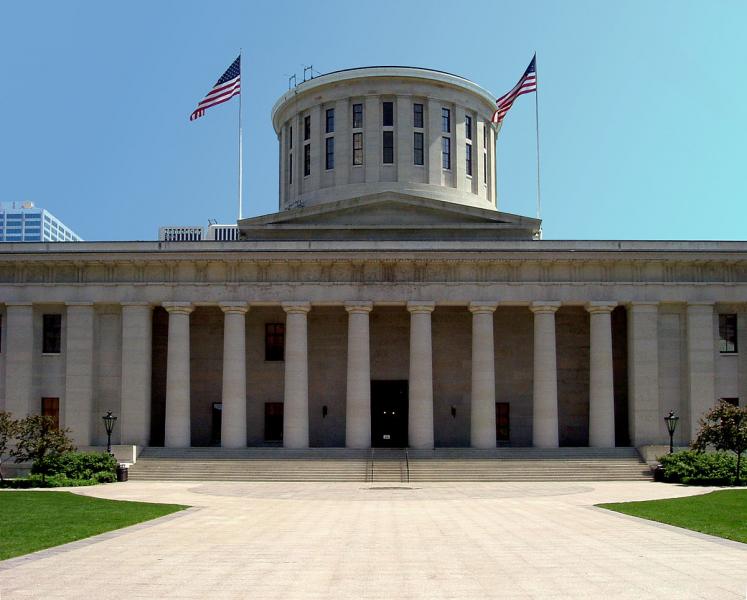 Ohio Statehouse columbus by Alexander Smith is licensed under CC BY-SA 3.0.
Ohio Statehouse columbus by Alexander Smith is licensed under CC BY-SA 3.0.
Buckeye taxpayers have been signaled as the first priority for new Ohio House Speaker Jason Stephens, as House Bill 1 would reduce and flatten the state income tax rate.
The proposed 2.75% rate would make Ohio’s income tax lower than neighboring Michigan, Indiana, Pennsylvania, and West Virginia. In fact, that rate would be the second-lowest flat tax rate in the U.S. behind only Arizona.
This is a bold proposal, and one that is overdue for a state that has lost population, and seen economic stagnation over the past decade. Along with the intense focus of legislators on regulatory reform, occupational licensing reform, and school choice the state is becoming more welcoming across the board for families, workers, and businesses.
With the discord following the election of the new speaker, the priority legislation announcement is an important indicator of where things will go this session. The Republican Majority Caucus Leader, Rep. Derek Merrin, backed income tax reform as a priority early this year.
Ohio House Republicans will fight for an income tax cut this budget cycle because hard-working Ohioans deserve to keep what they earn.@OHRGOPCaucus @ohiogop @OhioSenateGOP @nfib_oh @OhioChamber @Forbes https://t.co/q9TUHgMdXc
— Derek Merrin (@DerekMerrin) February 5, 2023
Among those priority bills announced by Speaker Stephens are a significant expansion of school choice, and curbing ESG policies that put politics over sound investment. These are big conservative priorities that should give Ohioans some confidence the House is getting to work on issues they care about.
ATR applauds all House Republicans for making income tax reform the top priority. House Bill 1, which is sponsored by Rep. Adam Mathews, would be the largest tax cut in the state’s history, and make Ohio one of the lowest-income tax states in the nation.
They have much agreement with the Senate on flattening the income tax. This Wednesday, Senators George Lang and Steve Huffman spoke about their support for eliminating the state income tax entirely at a press conference with Americans for Tax Reform, Americans for Prosperity, and the Buckeye Institute.
With more than 20 states cutting their income taxes since 2020, and most of Ohio’s neighbors having lower tax rates, the tax cutting focus is vital to growing the Buckeye State. The state is collecting more revenue than it needs, and that money belongs back in the pockets of hardworking Ohioans, something legislative leaders are working hard to accomplish.

